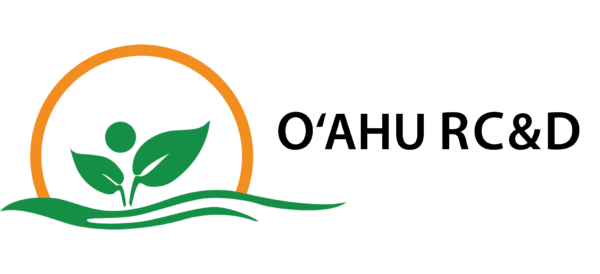Insurance & FSA Tools
Have you recently started or expanded your farm business and want to learn how to secure all your hard work and investment through insurance or contract agreements? Have you been experiencing ag theft and want to know how insurance can help protect against future losses? Do you need help understanding which types of liability, property or crop insurance are best suited for your business? How should you select policies and terms that make the most sense for your budget?
Did you Know: Crop Insurance is Now More Accessible and Affordable for Small, Diversified Producers in Hawai’i?
FAQ’s
Learn about frequently asked questions (FAQs) from local producers and what you should know to protect your farm, ranch or nursery business.
What Types of Crop Insurance Programs are available in Hawai’i?
Producers in Hawai’i have traditionally been underserved by crop insurance. Many of the crops grown in Hawai’i were not covered by crop insurance. Crop insurance was also geared towards monoculture production systems, as crops were insured on an individual basis, requiring producers to purchase insurance for each type of crop or commodity. Prior to 2014, crop insurance was cost-prohibitive for most diversified operations not only in Hawai’i, but also on the mainland. The 2014 Farm Bill tasked the USDA Risk Management Division with creating crop insurance options to cover all commodities grown on a farm under one policy. The “Whole Farm Revenue Protection Program” (WFRPP) met this need by providing policies that could better meet the needs of Hawai’i’s larger diversified operations, but still fell short of meeting the needs of the small producers selling direct or to regional markets, as the WFRPP requires intensive record keeping and tracking of commodity pricing based on larger global or national markets. In an effort to improve the crop insurance options for small, diversified operations, the RMA introduced the MIcro-WFRPP or “Micro Farm” in 2021. Both the WFRPP and the “Micro-Farm” policy options were designed to meet the needs of specialty, organic (both crops and livestock), or those marketing to local, regional, farm-identity preserved, specialty, or direct markets. The Micro Farm insurance plan is tailored for any farm with up to $350,000 in approved revenue, and WFRP covers any farm with up to $17 million in insured revenue.
What can Hawai’i producers anticipate for the future of crop insurance?
The U.S. Department of Agriculture (USDA) is actively improving crop insurance options for small and diversified farmers through improvements to the Whole-Farm Revenue Protection (WRFP) and Micro Farm insurance plans. These updates are part of USDA’s Risk Management Agency (RMA) efforts to increase participation and access to crop insurance. These improvements are especially important to specialty crop, organic, urban, and direct-market producers.
Improvements to WFRP for the 2024 policy year include:
- Allowing all eligible producers to qualify for 80% and 85% coverage levels.
- Allowing producers to purchase catastrophic coverage level policies for individual crops with WFRP.
- Expanding yield history to a 10-year maximum (from 4 years) for all crops not covered by another federal crop insurance policy.
- Making the policy more affordable for single commodity producers.
- Allowing producers to customize their coverage by choosing whether WFRP will consider other federal crop insurance policies as primary insurance when calculating premium and revenue to count during claim time.
Improvements to Micro Farm for the 2024 policy year include:
- Moving the sales closing date to a less busy time of year to help agents dedicate time to marketing the program. This is important specifically for producers that are purchasing Micro Farm for the first time as it provides additional time for agents to assist growers with important risk management decisions.
- Allowing producers to purchase other Federal crop insurance with Micro Farm.
- Allowing vertically integrated entities to be eligible for Micro Farm.
How Much Does Crop Insurance in Hawai’i Cost?
Crop insurance is based on premiums and administrative costs and vary by the type of crop insurance. Premiums are determined by grower and depending on their crop, county, coverage level, approved yields, approved revenue or tree count/age. One of the most basic coverages is the Catastrophic Coverage Level (CAT), which covers 22%. However, she points out that the CAT is not offered with the Whole Farm Protection Program, Micro-WFPP or Livestock programs. The basic coverage fee is estimated at the cost of a $655 administration fee with no additional costs for premiums.Coverage options starting with 22% coverage up to 85%, with most of these policies guarantee up to 75% of: Approved Yields, Dollar Value of Trees, or Nursery Inventory Insurance Value -OR- guarantee up to 85% of their Approved Gross Revenue on WFRPP or Micro-WFRPP. Lesson 3: Learn about Crop Insurance Options in Hawai’i, Federal Crop Insurance Overview: Whole-Farm Revenue Protection (WFRP) and Micro Farm.
Is Crop Insurance Provided for Plant Nursery Business Owners in Hawai’i?
The Nursery Commodity Insurance is available for nurseries that make more than 50% of their annual sales from selling wholesale. Learn more about this program by visiting our Lesson 3: Learn about Crop Insurance Options in Hawai’i, Federal Crop Insurance Overview: Whole-Farm Revenue Protection (WFRP) and Micro Farm.
Did you know?
Veterans, Beginning farmers and ranchers, Limited Resource Growers may have their administration and other fees waived and receive additional subsidy of premiums. Followed by a presentation by Michael on the Non-Insured Crop Disaster Assistance Program (NAP) and Jason Shitanishi with FSA. USDA’s commitment to making crop insurance affordable by providing a 62% subsidy of grower-paid premium for these federal insurance program.
NOW THAT YOU KNOW MORE ABOUT INSURANCE, TAKE ACTION TO PROTECT THE FINANCIAL AND LEGAL VULNERABILITY OF YOUR BUSINESS!
Take a step towards obtaining Liability, Property or Crop Insurance. by viewing the lessons below or contacting one of the active insurance agents servicing Hawaii’s Farm and Ranch Businesses and Nurseries.
Upcon completing this course you will gain understanding to help you:
- Protect high-value property on your farm, such as your tractor or other equipment or infrastructure;
- Reduce your legal and financial risks from being held liable from an injury on your farm;
- Protect your profit loss from crop damage or a damaged delivery.
Insurance Agents Actively Serving Hawai’i’s Farms, Ranches and Nursery Businesses
Drew Smthye
Wraith, Scarlett & Randolph Insurance Services, Inc.
https://www.wsrins.com
530-662-9181
info@wsrins.com
Bonnie Lind
Lind Insurance Services
https://lindinsuranceservices.com
888-276-7728 toll-free
888-708-1875 toll-free fax
Tracy Adams
Adams & Associates
https://www.adamsassociatesinsurance.com
808-757-9464
Robert Yamane
Pyramid Insurance
robert.yamane@pyramidins.com
https://www.pyramidins.com
808-527-7667
Bradley Johnson
EastCo Group
brad@eastcogroup.com
https://www.eastcogroup.com
719-342-5862


